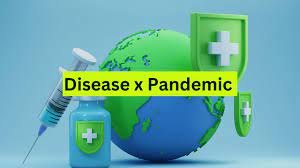
Latest information on Pandemic X, a list of diseases that could cause a global pandemic in the future The term Disease X was coined several years ago as a way to get scientists working on medical security measures for unknown infectious threats. That is, Disease X is one of the initiatives developed to facilitate early detection of unexpected viruses such as the COVID-19 virus rather than known viruses such as the Ebola virus. The background behind Disease X is to promote the development of technologies including vaccines, drug treatments, and diagnostic tests for viruses that attack people suddenly. It can be quickly adapted and deployed in response to potential future problems of an epidemic or pandemic. The World health Organization (WHO) added Disease X to the list of "priority diseases" on its website a few years ago. It is noteworthy that Disease X is also classified in the same list as Corona, Ebola, Lassa fever, Middle east respiratory syndrome (MERS), Nipah, and Zika.
 What is 'Disease X'?
What is 'Disease X'?Disease X is not actually a disease, but a term used to refer to a disease. It can be the worst disease ever. Disease X is a provisional designation that was introduced by the World health Organization in february 2018 on their list of scheduled priority diseases to indicate a pathogen that may cause an epidemic in the future, i.e., an as-yet unknown pathogen. In 2017 Disease X was listed as a priority for research and information on this virus was discussed at the World Economic Forum in Davos, Switzerland.
.jpg) What is the use of disease X research?
What is the use of disease X research?X may be a new disease agent. That is, it can be anything from a virus, bacteria, or fungus. It is "preparation" for an unknown disease. The humanitarian crisis caused by the 2014-2016 Ebola epidemic in West Africa sparked the wake-up call for the X research. That's because, despite years of research, the World health Organization is making several efforts to speed up a range of tools for "priority diseases" to tackle diseases like Ebola, which has claimed more than 11,000 lives.
Crimean-Congo hemorrhagic fever, Ebola virus disease and Marburg virus disease, Lassa fever, Middle east respiratory syndrome (MERS) and SARS, Nipah and Henipaviral diseases, Rift Valley fever, Zika, Covid-19, Disease X and the list goes on. It took just 326 days from the publication of the genome sequence of the SARS-CoV-2 virus to the approval of the first COVID-19 vaccine, largely due to work carried out since 2017 in preparation for Disease X. CEPI, a $3.5 billion program with the potential for an emerging pandemic, is working on several initiatives, including rapid vaccine development that could produce new vaccines within 100 days.




 click and follow Indiaherald WhatsApp channel
click and follow Indiaherald WhatsApp channel